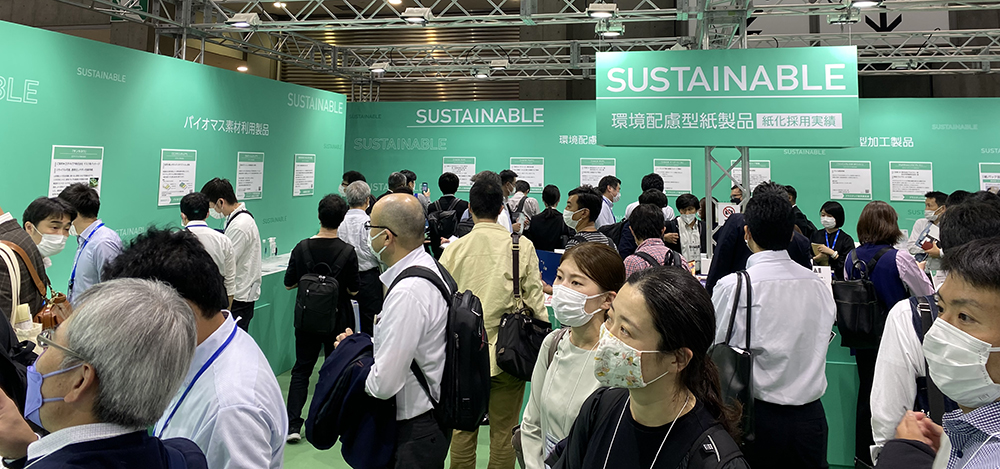
Trend spotting in Japan reveals differences in packaging size and materials
What does sustainable packaging mean to you? In Sweden, we tend to think of fossil-free packaging made from renewable and natural raw materials. In Japan, sustainability means small packages that preserve the food; the material is secondary.
In mid-October, a group from Paper Province travelled to Japan to participate in Asia’s largest packaging fair – Tokyo Pack. Normally organized every two years, it gathers around 70,000 visitors and features everything related to packaging and machine solutions.
Small packages and long shelf life
Participating in a world fair like Tokyo Pack, representatives of the packaging industry can meet and be inspired by each other.
“When it comes to new degradable materials in packaging, Europe, and not least Sweden, is at the development forefront. In a country like Japan, the perspective is different: the top priority is to protect the food and extend its shelf life, even if it means making plastics the predominant material,” says participant Daniel Ragnarsson, who is the commercial director of UMV Coating Systems.
“It’s not because the Japanese have the most climate-smart packaging that they claim their packaging is sustainable and one hundred percent ‘green’, but because they reduce food waste and are good at recycling,” says Paper Province project manager Peter Edberg.
Thus, the perspective on sustainability is greatly influenced by lifestyle in Japan. Many small households means many small packages.
Trend spotting
Sara Larsson, a teacher at the Brobygrafiska graphic design school, was also present at Tokyo Pack. She notes a significant change over just a few years, in that the Japanese are shifting to fibre-based packaging.
“Another trend when it comes to plastics was the focus on monomaterials as the future solution. They consist of single materials that haven’t been mixed with others, which makes them easier to recycle,” she says.
Furthermore, Japan is far ahead as regards the connection between packaging and the Internet. QR codes make it possible, for example, to check contents, track products and take part in campaigns.
The fair was vibrant with the spirit of the future. One example was the vision of 3D-printed food and flavouring spray as a response to future food shortage.
Valuable for international collaborations
At Tokyo Pack, Paper Province was accompanied by 20 people from Swedish companies, such as member organizations UMV Coating Systems, Optipack and Brobygrafiska. Other participants were Business Sweden, RISE, Innovation Skåne and cup-lid manufacturer Liplid.
“It was a good trip in many ways. UMV got a fresh start in Asia. They had several meetings with potential customers, and will also need to recruit in the coming six months, so keep an eye on the Paper Province website,” Peter advises.
Brobygrafiska also left Tokyo Pack with new international contacts after their presentation on ink management.
“We’ll see what happens in the future. But during the pandemic, people at Brobygrafiska have developed great skills in digital test runs in the printing press, and that should make continued remote collaborations easier,” says Peter.























